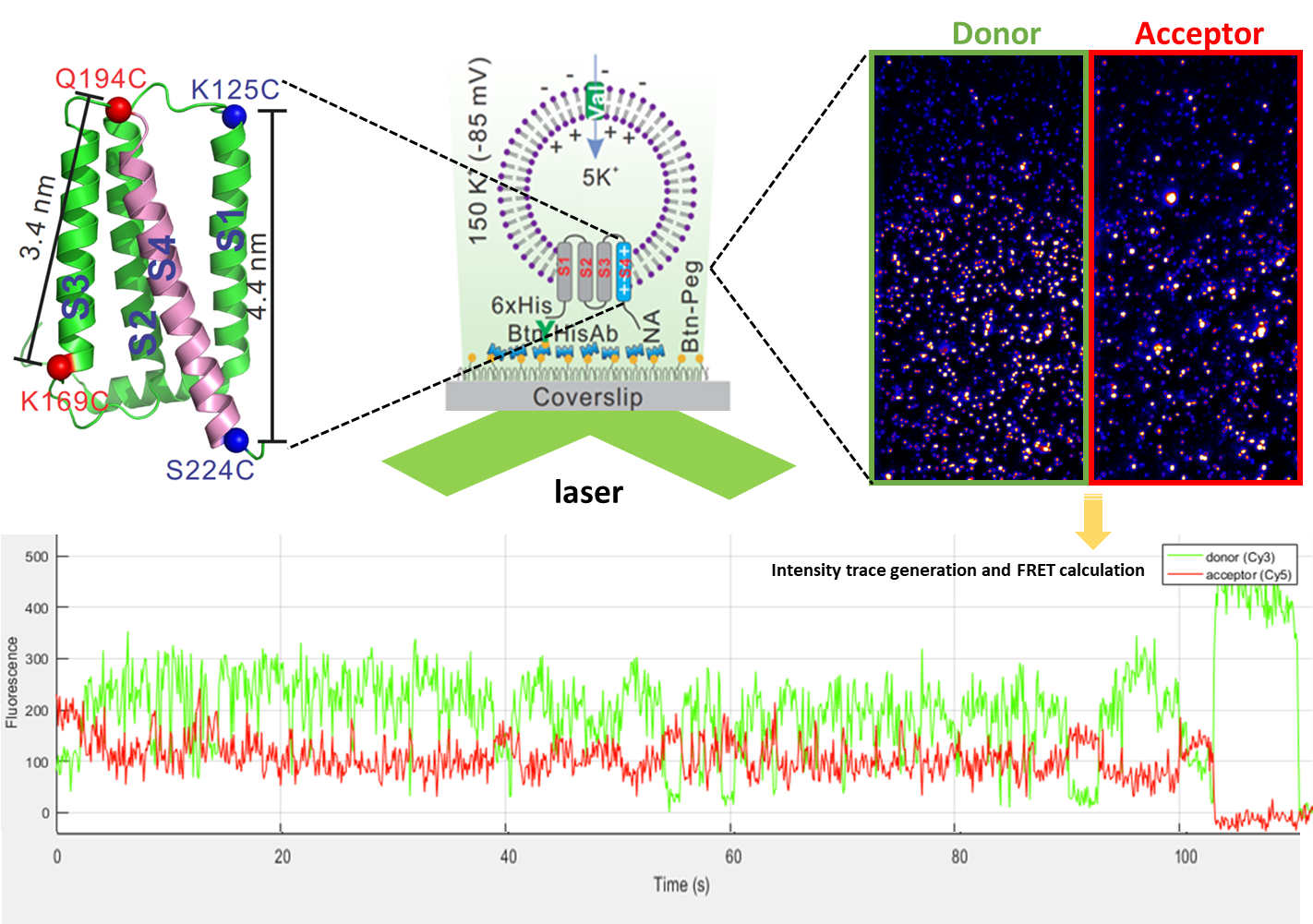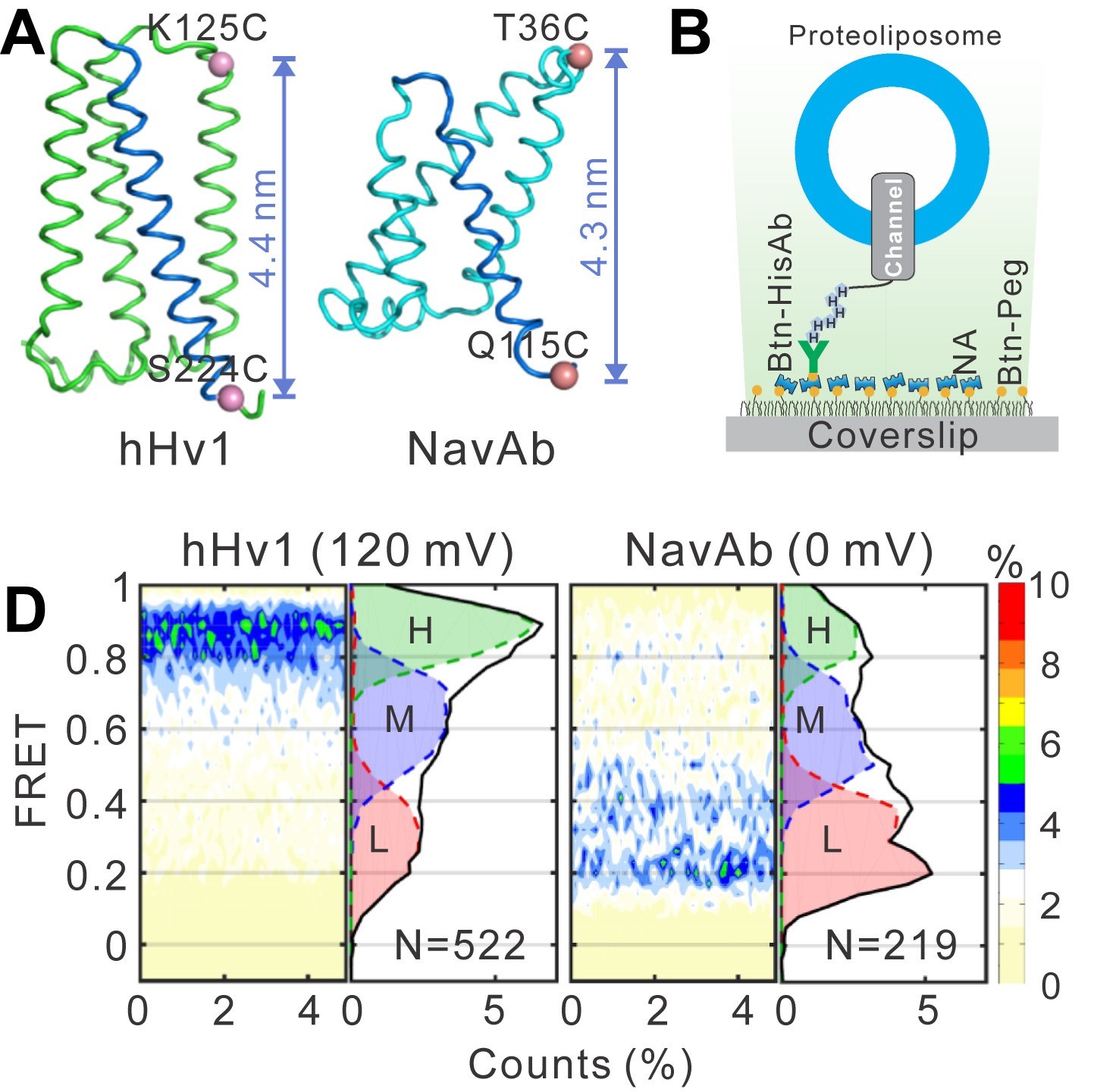Cholesterol inhibits human proton channel (hHv1) 
Single-molecule fluorescence resonance energy transfer (smFRET) was used for evaluating the inhibition of cholesterol for activation of hHv1 channels, which regulates human fertilization by linking the cholesterol efflux with intracellular alkalization, thus sperm hyperactivation.
Read the article in PNAS
Arachidonic acid reverses cholesterol and zinc inhibition of human voltage-gated proton channels
Voltage-gated proton (Hv) channels are solely composed of voltage sensor domains without separate ion-conducting pores. Zn2+ and cholesterol inhibit the human voltage-gated proton channel hHv1 by stabilizing its S4 segment at resting state conformations. Released from phospholipids by phospholipase A2 in cells upon infection or injury, arachidonic acid regulates the function of many ion channels, including hHv1. Our data indicated that arachidonic acid strongly activates hHv1 channels by promoting transitions of the S4 segment towards opening or ‘pre-opening’ conformations. Moreover, we found that arachidonic acid even activates hHv1 channels inhibited by Zn2+ and cholesterol, providing a biophysical mechanism to activate hHv1 channels in non-excitable cells upon infection or injury.
Read the article in JBC
Voltage sensor dynamics of a bacterial voltage-gated sodium channel NavAb reveal three conformational states
High-resolution structures of voltage-gated sodium channels (Nav) were first obtained from a prokaryotic ortholog NavAb, which provided critical mechanistic insights into Na+ selectivity and voltage gating. Our single-molecule Fluorescence Resonance Energy Transfer (smFRET) measurements on the tandem NavAb channel labeled with Cy3/5 FRET fluorophore pair revealed spontaneous transitions of the NavAb S4 segment among three conformational states, which fitted well with the kinetic model developed for the S4 segment of the human voltage-gated proton channel hHv1.
Structural dynamics study of human proton channel (hHv1) 
Examine the influence of voltage on conformational dynamics of voltage-sensing Hv1 channel at a single molecule resolution. It provides a new insight in the gating mechanism by showing that the voltage sensor can access an intermediate conformation distinct from the activated and resting state.
Read the article in Elife
DNA nanostructure-based label-free detection of cancer miRNA-21 
A facile, label-free, and amplification-free electrochemical biosensor was developed to detect miRNA using DNA origami nanostructure-supported DNA probes. In our design, a DNA origami was utilized as the miRNA sensing platform to provide a large number of free-standing DNA probes to capture target nucleic acids with enhanced probe accessibility and high sensitivity.


